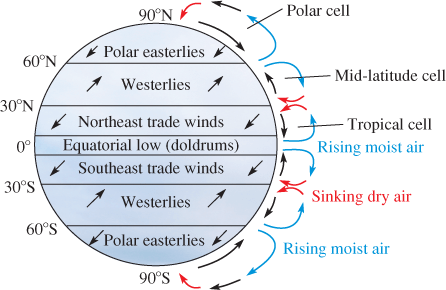In contemporary workplaces, the notion of a positive organizational climate transcends mere jargon; it embodies the very essence of employee engagement and productivity. An organization’s climate directly influences how employees perceive their environment, impacting their well-being and performance. While management often lays the groundwork for creating such an atmosphere, the contributions of employees are equally paramount. Understanding how employees can foster a positive organizational climate is an intricate tapestry woven through various actions, behaviors, and attitudes.
To begin with, one must recognize the multifaceted nature of organizational climate itself. Organizational climate encompasses the prevailing attitudes, standards, and practices that characterize the internal environment of an organization. It is not static; it evolves through the collective efforts of its members. Employees have the agency and power to impact this climate positively, but often, it requires a conscious effort and an understanding of the underlying dynamics at play.
One key aspect where employees can make a significant contribution is through communication. Open, honest, and transparent communication fosters trust among colleagues and management alike. When employees feel safe to express their thoughts and concerns, it cultivates a culture of openness and collaboration. Encouraging a dialogue where feedback is not only accepted but sought out can create an environment where diverse viewpoints are valued. This inclusive approach paves the way for innovation and drives problem-solving, as varied perspectives yield comprehensive solutions.
Furthermore, employees can enhance organizational climate through their commitment to teamwork. Collaboration is often touted as a cornerstone of organizational success. When employees engage in synergistic partnerships, they enrich the organizational fabric by pooling their skills and experiences. Team-building activities, both formal and informal, can further solidify these bonds. Participating in collective challenges and celebrating shared successes fosters camaraderie and strengthens relationships, thereby crafting a supportive network that enhances overall morale.
Moreover, the promotion of a positive organizational climate hinges on employee recognition and appreciation. Acknowledging contributions, no matter how small, instills a sense of belonging and motivates individuals to strive for excellence. When employees recognize each other’s hard work, it elevates the entire atmosphere. Peer-to-peer recognition programs can be excellently effective in nurturing this habit, as employees often feel more validated by their colleagues than by hierarchical praise alone. This reciprocal appreciation builds a culture of respect and encourages individuals to contribute more actively to the organizational narrative.
In addition to recognition, another salient aspect is the individuals’ alignment with organizational values. When employees resonate with the mission and vision of their organization, their engagement and satisfaction transcend mere job performance. Cultivating an intrinsic connection to the organization’s ethos can stimulate passion and purpose among employees. To foster this alignment, organizations should strive to elucidate their values clearly and involve employees in the development of policies that reflect those core principles. When employees see their values mirrored in the organizational culture, they are more likely to champion initiatives that bolster a positive climate.
Moreover, employees can contribute to a healthier organizational climate by prioritizing emotional intelligence in their interactions. Understanding one’s own emotions and empathizing with others creates a compassionate workplace. Encouraging practices such as active listening, non-verbal communication, and emotional regulation can significantly alter the dynamics within teams. When conflicts arise, those equipped with emotional intelligence are better positioned to navigate the intricacies of interpersonal relationships, fostering an environment of resolution rather than division.
Additionally, promoting inclusivity and diversity is vital for nurturing a positive organizational climate. Employees can advocate for the representation of diverse voices and perspectives, which leads to a richer organizational experience. By supporting diversity initiatives, participating in diversity training, and challenging biases, employees play an essential role in creating a welcoming atmosphere for everyone. Embracing diverse viewpoints can spur creativity and innovation, driving both individual and organizational growth. In the long run, a commitment to inclusivity leads to increased job satisfaction and retention rates.
Moreover, employees can also contribute by engaging in self-care and promoting well-being. In a fast-paced work environment, the risk of burnout can be significant. By prioritizing their mental and physical health, employees not only enhance their resilience but also model healthy behaviors for their colleagues. Encouraging wellness initiatives, whether through organized activities or personal practices like mindfulness, can cultivate a culture that values health and safety. A workforce that prioritizes well-being is more likely to contribute positively to the organizational climate.
In conclusion, the collective contributions of employees are indispensable in sculpting a positive organizational climate. Through effective communication, collaboration, recognition, alignment with values, emotional intelligence, inclusivity, and well-being practices, employees can significantly influence their workplace environment. As organizations increasingly recognize the symbiotic relationship between employees and climate, investing in strategies that leverage these contributions will lead to enhanced performance and satisfaction, ensuring a thriving organizational ecosystem.






